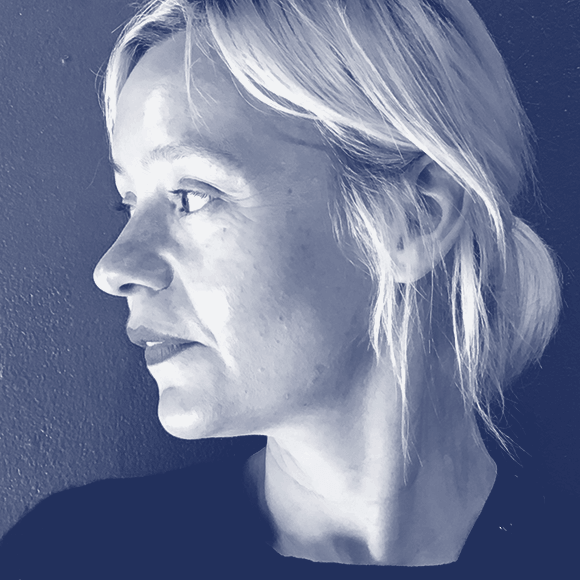I want to start this post off by congratulating the entire class on their efforts up to this point. Everybody’s projects are coming along, and looking great. They are about to embark on the home stretch! We didn’t have any museum visits for Week #4, as we enjoyed Bastille Day, but as usual, we had a great time at #tptalks on Tuesday.
Week #4 has been a week of intricacies. Learning to design a typeface from scratch in less than 5 weeks is a monumental task for the students. For the instructors, strategically spreading out the information given to the students over the duration of the program is equally challenging. Too much too soon, and the class is completely overwhelmed, in a state of information overload. Too little too late, and no one gets enough time to finish their projects. Jean François and the rest of the team balance this very effectively, and Week #4 is the perfect time to begin introducing some of the more intricate details that type design is so notorious for.
Monday morning began with a workshop with Jean François and Mathieu. They covered a lot of ground, talking particularly about managing your diagonals, keeping them consistent across your glyphs, flaring or tapering slightly to make optical corrections—particularly where two shapes meet. We also have a fascinating discussion about interpolation—the first time we have covered this topic in such detail. We learned that if we are careful to draw our paths correctly (including keeping points and handles proportionally aligned across the masters), we can even extrapolate some instances ‘for free’, such as a caption weight from regular and bold high contrast masters.
“For the instructors, strategically spreading out the information given to the students over the duration of the program is challenging. Too much too soon, and the class is overwhelmed. Too little too late, and no one gets enough time to finish their projects.”
Interpolation is incredibly useful for providing ourselves with the freedom to choose the precise weight (or any other axis we have chosen), i.e. for our regular, by testing values between the regular and bold masters. Another advantage of drawing alternative axes alongside our regular or ‘starting point’ style.
We also covered punctuation, a brief session on italics, and later on even a lecture on effective file naming and management. All incredibly practical and useful material, as we bring our skills outside the classroom and into real life, where maintaining a good file system is vital.
The attendees have been charged with creating an alternate style (or in some cases, multiple alternates!) to accompany their typeface. As I mentioned above, this is a very effective way of testing the outer limits of your design, and very often problems solved in alternate design spaces can provide useful information for solving similar problems in your original design. Many have opted for a black weight, some for high/low contrast, and have even accepted the challenge of drawing italics to complement their roman. This extra work has done a lot to improve the student’s shapes, and seeing everyone’s work laid out on the tables (at this point, the sheets of paper barely fit!) is very exciting.
“The attendees have been charged with creating an alternate style to accompany their typeface. This is a very effective way of testing the outer limits of your design.”
On Tuesday, Albert-Jan joined us, bright and early in the morning. I had been looking forward to his visit for some time, and it was such a pleasure to meet him in person. A quietly confident, quick-to-laugh, and extremely knowledgable person, his input on the student’s work was timely and valuable. The attendee’s formed small groups and visited Albert-Jan in the next room throughout the day, and every time I passed the room, he was buried deep in thought, studying the typeface printouts and dropping gems of knowledge. It was a pleasure to observe how passionate he is about his work, and how patient he is with the students.
“A quietly confident, quick-to-laugh, and extremely knowledgable person, Albert-Jan’s input on the student’s work was timely and valuable.”
During that morning we also took a workshop with JFP, who walked us through some useful pointers to consider when creating a black from a regular. We watched him over the projector, and were able to observe his processes. He of course made it look very easy, which it absolutely is not, but seeing it happen and hearing his detailed explanations definitely helped demystify some of the concepts.

Sylvia Tournerie + Albert Jan-Pool talks
This was a good week for #tptalks. It was great to have the lovely Véronique Marrier facilitating. She is super fun, and together with Jean François ran the night smoothly. I really love the work of this week’s local guest Sylvia Tournerie, and had been looking forward to listening to her presentation since the beginning! To then top the night off with Albert-Jan talking about legibility in type design was an absolute treat.
Sylvia delivered a fascinating lecture. She took us on a highly detailed journey through one of her recent projects for Hermès, which spanned many mediums, sizes, scopes and countries. We heard about her journey from thinking about the Hermès craftsmen’s tools, and how she could inject the spirit of those tools into the project, to tracing the tools as vector shapes, and experimenting with collage and layering, as well as playful and beautiful colours, and the challenges she met along the way. Seeing her work these shapes into many different applications, and experimenting with various layouts, some quite complex, some zoomed in, some very simple and stark, was a great pleasure.
Then Albert-Jan took to the stage to share his thoughts about his studies in the field of legibility. He questioned the way we classify type according to point size, and proposed that it could be more meaningful to think about viewing size, and the impact that the combination of point size and viewing distance has on the shapes of the letters within a typeface. Albert-Jan, under the encouragement of Eric Spiekermann in 1994, designed FF DIN, now one of FontShop’s best-selling typefaces. It is based on DIN, a typeface adopted in 1936 by Germany as the standard for use on traffic signs, street signs, house numbers and license plates.
Click here to read more about the TypeParis Talks, and watch the videos of the talks themselves.

Wednesday rolled around, and the class—sensing the end of the penultimate week—are intensely focused on putting what they’ve been learning to use. Particularly after such an information-rich day as Tuesday. There is barely a peep from the attendees as they slave away on their computers. Xavier is looking after the class, travelling around to each student, helping them one-on-one with their shapes and technical questions. Mathieu joined Xavier in the afternoon, and together they assisted everyone’s queries.
Thursday was business as usual. This was the last day all together before the last week of TypeParis! So everybody was working hard, keen to absorb as much knowledge and make as much progress on their letters as possible before the three-day weekend began. In the afternoon, JFP really went to town on a punctuation workshop. It was a very intense but very valuable exploration into the history, purpose, and guidelines for many of the most common punctuation marks and symbols. No stone was left unturned!
We were sad to wave goodbye to Xavier, Thursday being his last day with us. His input was so helpful, we are all grateful for his keen eye and patience over the last few weeks. On a bright note, it was great to have David Březina return to the classroom once again to help us! We got back to work after the punctuation workshop, and made the most of the last hour before it was time to pack up and head on home for the week.
“We were sad to wave goodbye to Xavier, Thursday being his last day with us. His input was so helpful, we are all grateful for his keen eye and patience over the last few weeks.”
Amazing work from the attendees this week, they are making great strides. One week left to expand and refine their typefaces; more on that on the blog soon
— By Dave Coleman
Learn more about TypeParis courses and conferences!
➼ Reports
➼ Type & graphic designers interviews
➼ Attendees feedback series
Apply to TypeParis Summer course!
The deadline for applications is 14 March, every year.
Sponsors






































